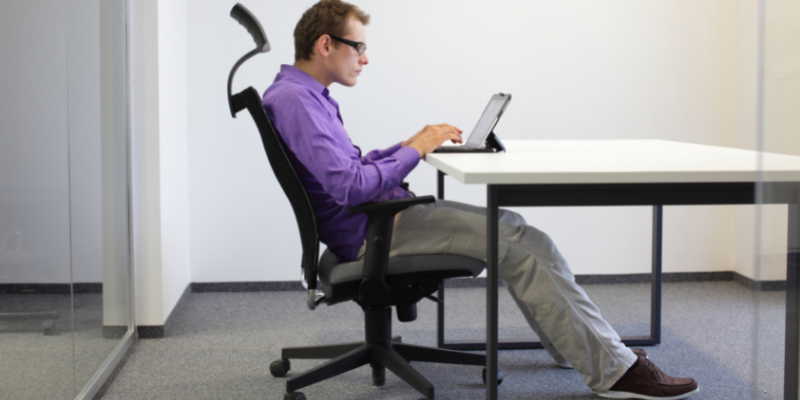When you neglect your posture and round your back while sitting for long periods in front of a computer, it’s like inviting a vampire into your house, but the vampire in this scenario is back pain, and they can’t wait to suck the energy right out of you.
Maintaining the natural lumbar curve in your low back is essential to preventing posture-related back pain. This natural curve works as a shock absorber, helping to distribute weight along the length of your spine.
Adjusting any postural distortions and using better alignment can help stop back pain.
The Best Posture For Sitting At A Desk All Day
When sitting, it’s vitally important to your health to assume a neutral posture, reduce the stress on your muscles and joints, and lower your risk of getting injured. Here are the eight steps to sitting in a neutral posture.
Step 1.
Your neutral eye height should be slightly higher than the monitor.
Step 2.
Center your body in front of your monitor and keyboard.
Step 3.
Your neutral elbow height should be slightly higher than the keyboard and mouse height, and your elbows should be bent 90 degrees and positioned close to your body.
Step 4.
Your wrists should be in a neutral position floating over your keyboard while typing instead of resting on the work surface.
Step 5.
Press your lower back firmly into the lumbar support of your chair.
Step 6.
Your thighs should be parallel to the floor or your hips slightly higher than your knees.
Step 7.
You should be able to fit two to three fingers between the back of your knees and the front edge of your chair.
Step 8.
Your feet should be flat on the floor or resting on a footrest.
So there you have it, eight steps to a neutral sitting posture. Now to prevent getting stuck in a hunched over caveman position, it’s essential to take micro-breaks from repetitive tasks or static sitting postures every 30 minutes for one to two minutes before resuming that activity or posture.
Always try to find opportunities to get out of your chair and move around. Change postures frequently throughout your day—alternate working from a sitting to a standing position whenever possible.
Your best posture is your next posture, so keep moving.
